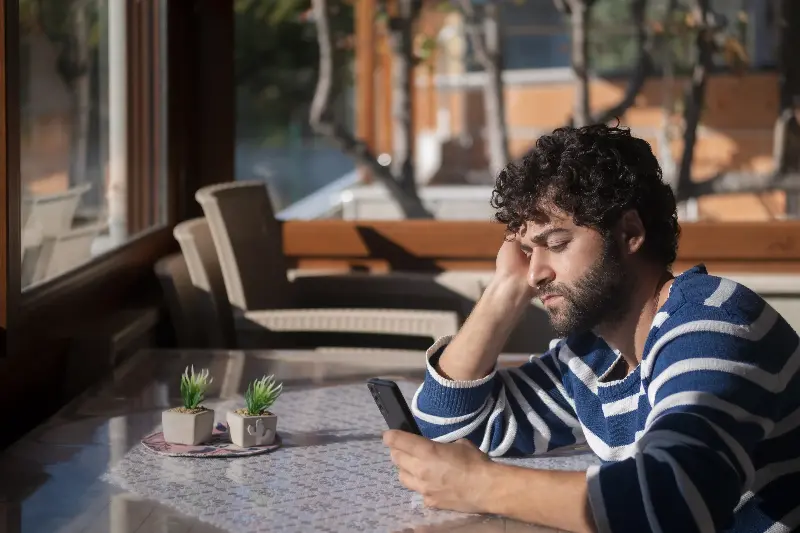In a world where everyone is just a click away, social media has changed the way we connect, share, and perceive our own lives. From the thrill of instant updates to the camaraderie of online communities, platforms like Instagram, Facebook, and TikTok have revolutionised social interaction. Yet, beneath the glossy filters and viral videos, there’s a growing conversation: are these digital spaces truly making us happier, or are they quietly fuelling our anxiety?

The Dopamine Rush: Why Social Feeds Feel So Rewarding
One reason social media feels so addictive lies in the way it taps into our brain chemistry. Studies have shown that each like, comment, or share triggers a dopamine hit, the same feel-good hormone we get from eating chocolate or receiving a compliment. This positive reinforcement keeps us coming back for more, eager to share snippets of our lives and see how others respond. It’s not all superficial—these interactions can deepen friendships, foster creativity, and even spread joy.
However, the quest for digital approval can also become a double-edged sword. As we scroll through endless curated images and updates, it’s easy to confuse likes and follows with genuine connection. While a witty post can rack up hundreds of hearts, it’s the offline conversations, shared laughter, and real-life support that research suggests bring lasting satisfaction.
Comparison Culture: The Hidden Cost of Being ‘Online’
If you’ve ever closed your favourite app feeling a little deflated, you’re not alone. Psychologists have pointed to what’s known as “social comparison theory”—the tendency to judge our own lives based on what we see from others. As we scroll past exotic holidays, perfect meals, and milestone celebrations, it’s easy to forget that most feeds only showcase the highlights.
Data from the UK’s Royal Society for Public Health indicates that platforms focused on images—such as Instagram—are among the worst for mental wellbeing, particularly for young people. A recent poll found that over 70% of users have experienced ‘FOMO’, or the fear of missing out, due to seeing friends’ activities online. Even more striking, researchers report increased levels of anxiety and depressive symptoms among heavy social media users, painting a complex picture of connection and unease.

Authenticity Versus Performance: Curating the ‘Perfect’ Life
Modern social media encourages us to present the best version of ourselves, but where is the line between authenticity and performance? Influencers and everyday users alike face pressure to filter, edit, and refine their posts until they align with current trends or expectations. This performance can be fun—think viral dance challenges or creative memes—but it can also lead to emotional burnout.
Interestingly, authenticity is becoming a buzzword in the digital world. A surge in ‘finsta’ accounts (private, more candid Instagram profiles) and campaigns like #NoFilter signal a growing desire for realness over perfection. People crave relatable stories and honest moments. Research from the University of Pennsylvania even found that those who use social media with intention—seeking genuine connection rather than passive scrolling—tend to report greater happiness and less loneliness.
Digital Well-Being: Setting Boundaries in the Online World
The concept of digital well-being is gaining traction as more people seek a healthy relationship with their screens. Small changes can make a big difference—setting app timers, muting notifications, or taking regular breaks allows us to stay connected without feeling overwhelmed. Experts suggest creating “phone-free” zones at home or scheduling offline time with friends and family.
Schools and employers are joining the conversation too, with initiatives that teach media literacy and encourage mindful use of technology. These efforts recognise that the digital world is here to stay, but our habits and boundaries can shape whether it lifts us up or drags us down.
The Positive Power of Online Communities
It’s not all worries and woes—there’s another side to the social media story. For many, the digital world is a lifeline, offering support, inspiration, and belonging. Communities centred around shared passions—be it art, gaming, health, or activism—break down geographic barriers and create space for new friendships to blossom.
During times of crisis, these networks can be vital. During the pandemic, for example, virtual book clubs, exercise challenges, and mutual aid groups flourished, offering comfort in difficult times. Even a simple meme can spark laughter and connection on a lonely day. In many ways, social media has the potential to amplify joy and resilience, helping us face challenges together.
We’re at a crossroads where the potential for happiness and harm exists side by side, shaped by how we use our tools and interact with each other. By choosing to prioritise real connection, embrace authenticity, and care for our digital well-being, social media can be more joy and less anxiety—a force that empowers us to live well, both online and off.
